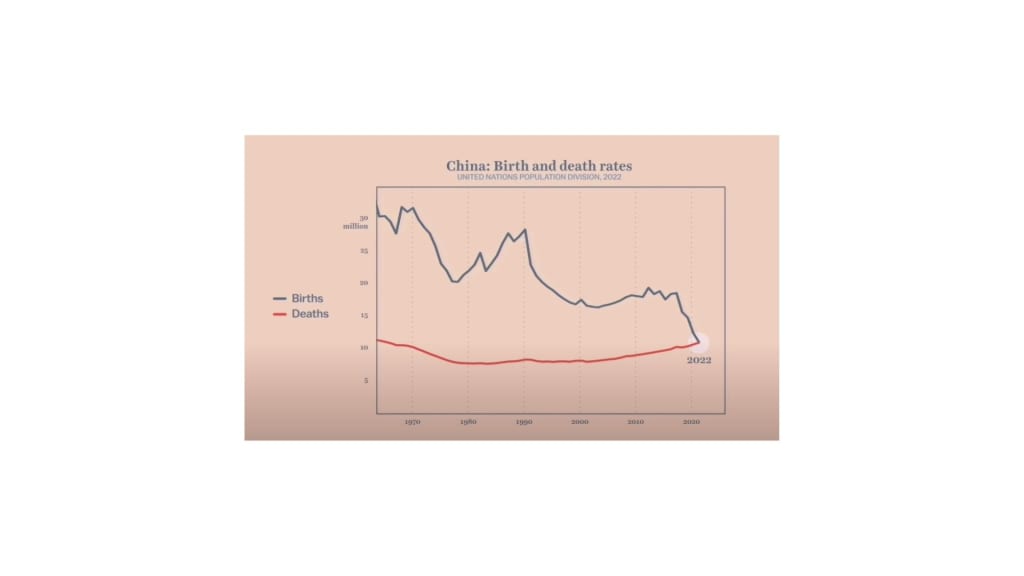Understanding China's Shrinking Population
Exploring the Factors Behind China's Demographic Decline

China's demographic trajectory over the past six decades has been nothing short of remarkable, marked by a series of policy interventions and socioeconomic transformations that have profoundly shaped the country's population dynamics. From the tumultuous years of Chairman Mao's rule to the era of economic reform and modernization under Deng Xiaoping, China's population trends have mirrored its broader societal evolution, with far-reaching implications for its economy, social fabric, and global standing.
At the heart of China's demographic story lies the interplay between birth and death rates, which have fluctuated significantly over the years. For much of the latter half of the 20th century, China experienced a period of rapid population growth, fueled by high birth rates and declining mortality rates. However, the landscape began to shift dramatically in the 1980s, following the implementation of the controversial one-child policy aimed at curbing population growth. This policy, enforced through a combination of coercive measures such as sterilization, forced abortions, and financial penalties, had profound and lasting consequences for China's population dynamics.
In the immediate aftermath of the one-child policy, China experienced a sharp decline in birth rates as families adhered to the strict limitations on childbearing. The policy succeeded in achieving its primary goal of slowing population growth, but it also gave rise to unintended consequences, including a skewed gender ratio, with a preference for male children leading to widespread sex-selective abortions and female infanticide. Moreover, the one-child policy resulted in the emergence of what is known as the "4-2-1" family structure, characterized by a single child bearing the responsibility of caring for two parents and four grandparents—a demographic imbalance that has profound implications for China's aging population.
Despite the relaxation of the one-child policy in recent years, including the introduction of a two-child policy in 2016 and the subsequent shift to a three-child policy in 2021, China continues to grapple with demographic challenges that defy easy solutions. The legacy of decades of strict population control measures, coupled with changing social and economic realities, has created a complex demographic landscape characterized by low fertility rates, an aging population, and a shrinking workforce.
The implications of China's demographic transition are far-reaching and multifaceted, with significant implications for the country's economic trajectory, social welfare system, and global role. One of the most immediate concerns is the impact on China's labor force, as a shrinking pool of working-age individuals threatens to undermine the country's economic competitiveness and productivity growth. Moreover, the growing proportion of elderly citizens presents challenges for China's social welfare system, including healthcare, pensions, and long-term care services, which must adapt to meet the needs of an aging population.
At the same time, China's demographic shift has broader geopolitical implications, shaping its role as a global economic powerhouse and political actor. As the world's largest manufacturing hub, China has long relied on its abundant labor force to drive economic growth and industrialization. However, the demographic headwinds of an aging population and declining workforce pose significant challenges to this model, raising questions about China's future economic trajectory and its ability to maintain its status as a global manufacturing superpower.
Moreover, China's demographic challenges intersect with broader social and economic issues, including income inequality, urbanization, and environmental sustainability. The uneven distribution of economic opportunities between urban and rural areas, coupled with rising living costs and housing affordability concerns, has contributed to declining fertility rates and delayed marriage and childbearing decisions among young people. Meanwhile, rapid urbanization and industrialization have placed strain on China's natural resources and environmental infrastructure, exacerbating environmental degradation and pollution levels.
In response to these challenges, Chinese policymakers are exploring a range of strategies aimed at addressing the country's demographic imbalances and promoting sustainable population growth. These efforts include measures to incentivize childbirth, improve access to childcare and family support services, and reform the hukou system to facilitate rural-urban migration and integration. However, achieving meaningful progress on these fronts will require coordinated action across multiple policy domains, as well as sustained investments in education, healthcare, and social welfare infrastructure.
Looking ahead, the trajectory of China's demographic transition will have profound implications for the country's future trajectory and its role in the global arena. As China grapples with the complex challenges of an aging population, shrinking workforce, and evolving social and economic landscape, the need for innovative solutions and forward-thinking policies has never been greater. By addressing the root causes of demographic change and fostering inclusive and sustainable development, China can navigate the challenges and opportunities of its demographic transition and build a prosperous and resilient future for its citizens.
About the Creator
Enjoyed the story? Support the Creator.
Subscribe for free to receive all their stories in your feed. You could also pledge your support or give them a one-off tip, letting them know you appreciate their work.






Comments
There are no comments for this story
Be the first to respond and start the conversation.